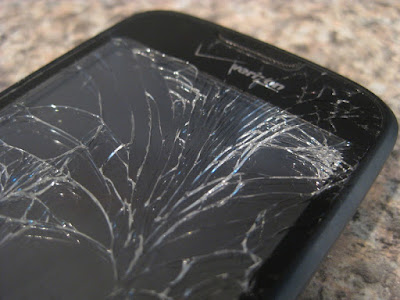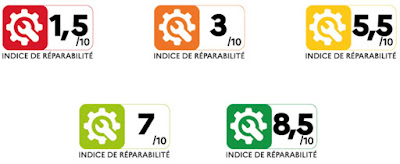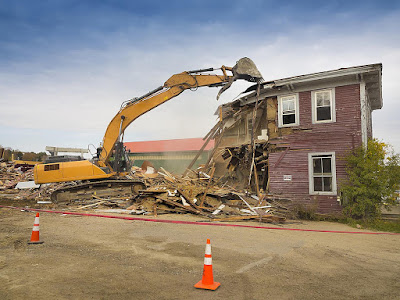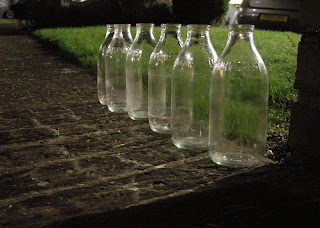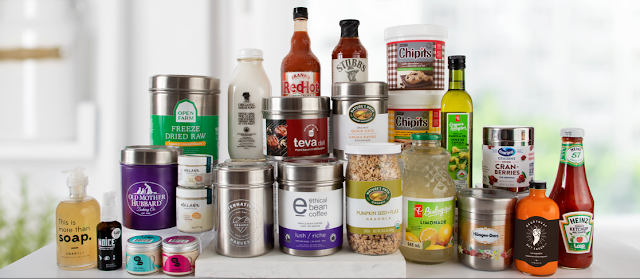Let's back that up a bit and take a look at plastic to start with. It's sooo handy... cheap, lightweight, easy to transport, malleable, not breakable (generally). It can made into so many handy things. And let's remember where it comes from. All plastic originates with crude oil or natural gas. Plastic water bottles, for example are made from PET plastic (that's short for polyethylene terephthalate). PET plastic is made from petrochemical sources, the first step of which involves the polymerization of ethylene glycol and terephthalic acid or dimethyl terephthalate to produce PET resin.
Let's be really clear here... if you have trouble pronouncing those things... odds are they are not good for you. And ingesting crude oil is definitely not on anyone's diet.
But surely those plastics are... you know... inert? The plastic is made and then it just sits there, like glass... and does nothing? Nope. Not so fast. But let's get back to our plastic water bottles...
Benefits of Plastic Bottles
Cost: Plastic is generally less expensive than aluminum and glass, so manufacturers and distributors obviously like cheaper. And so do consumers.
Weight: Plastic water bottles weigh less than aluminum cans and glass bottles, which also means cheaper transportation costs
Durability: Plastic is flexible and less prone to denting or puncturing, and definitely less likely to break. This means less product loss during transportation, handling and storage and less likelihood that the product will be damaged. Less waste is good, right? Certainly for the bottom line.
Convenience: Plastic bottles are resealable, which allows us to drink some now and save some for later. The bottles are also easy to squeeze and crush, making them less bulky afterwards.
Consumer preferences: This is us. We apparently like hte convenience of plastic water bottles...
The Problem of Plastic Bottles
Now the problem(s)... because while they may cost less in terms of manufacturing and transportation, there are other costs.
Recycling: While many plastics can now be recycled... that doesn't mean that they actually are. Many plastic bottles do not find their way to a recycling centre and get lost in forests, streams, ditches and waterways. Even if they are recycling, contamination of the recycling stream can limit the use and energy efficiency of the process. Many plastics can only be recycled a certain number of times before they need to be downgraded. So food or drink plastics eventually end up as lower-grade products.
Microplastics: The recycling process generates microplastics, teeny, tiny bits of plastic that contaminate the environment. But they are not the worst ones... these ones you can see with a microscope... but there are even smaller ones.
Nanoplastics: These are the teensiest, tiniest bits of polymer plastic, 1000 times smaller than the diameter of a human hair. Even a regular microscope can't see these ones. It used to be thought that a 500 ml bottle of water might contain 325 bits of plastic (micro or nano). But a recent study has shown that the actual amount is orders of magnitude higher...
Terrifyingly Tiny Plastics
Somewhere in the world, pristine water from aquifers or reservoirs or even just plain old tap water is poured into plastic bottles. That $0.01 of water in a $0.05 bottle then gets boxed up and shipped and sold to us. Costing us anywhere from $0.50 (if we buy a flat from Costco) or $2.50 if we get one at a convenience store. (Side Bar: Did you know Convenience = Expensive?)
Pure, clear water, right? We can see it through the plastic. It looks sooo good and clean. Not.
You see... plastic water bottles are NOT inert. They do not just sit there quietly and do nothing. Plastic water bottles begin shedding teeny tiny bits of plastic as soon as they are made - nanoplastics.
Now researchers have known this but they thought there might be 325 or so pieces of microplastics floating around in the water bottles. But a recent study took it a step farther. Because... remember... nanoplastics can't be seen under a regular microscope. You need a super-duper microscope to see nanoparticles. And what did they find... brace yourself....The average bottle of water contains anywhere from 110,000 to over 370,000 pieces of nanoplastics.
And these bits of polymer plastics are soooo small that they can migrate into your body's tissue... into your muscles, your organs, your blood, your brain and your unborn child's organs.
And those nanoplastics carry all sorts of toxic things with them... endocrine-disrupting chemicals such as bisphenols, phthalates, flame retardants, per- and polyfluorinated substances, or PFAS, and heavy metals. All of which are used in the manufacture of plastics.
Response from International Bottled Water Association
And what do the bottled water folks say to this new research?
“This new method [of testing water] needs to be fully reviewed by the scientific community and more research needs to be done to develop standardized methods for measuring and quantifying nanoplastics in our environment. There currently is both a lack of standardized methods and no scientific consensus on the potential health impacts of nano- and microplastic particles. Therefore, media reports about these particles in drinking water do nothing more than unnecessarily scare consumers.” (quoted in CNN article)
Ummm... that sounds suspiciously like the response of tobacco companies in the 40s, 50s and 60s... downplaying the dangers of smoking... Class action lawsuits tell a different tale.
Also sounds a bit like pesticide companies saying that their pesticides are so safe, you could drink them (pesticide lobbyist Dr. Patrick Moore in an interview)... right... we know how that's playing out. (Class-action lawsuit against Monsanto & Bayer for the pesticide Roundup)
I foresee a class action lawsuit against plastic bottle manufacturers and bottled water companies... don't have a crystal ball... not a psychic... but anyone can see the writing on the wall.
What Can We Do?
Stop buying plastic water bottles.
Ugh.
We have a bunch as part of our emergency kit. They are so convenient for that. But plastic water bottles do have an expiry date so what do we do with the expired ones now? We used to drink them but... not sure I want to do that anymore.
But in all other ways... we avoid plastic water bottles like the plague. We have excellent tap water and fill up our stainless steel water bottles with water when we head out the door. There is no reason for us to have plastic water bottles in our day-to-day life.
But this also got me thinking... what about plastic pop bottles?? You don't think they are immune from nanoplastics do you? Or plastic liquor bottles. Or plastic ketchup bottles.
It is tempting to just throw-up our hands in despair and go "Ah, we're going to die someday anyhow from something..." Or we could start somewhere. Start small. Ditch the bottled water. Drink pop out of cans, not bottles.
And read the news. Now that researchers can identify and categorize the nanoplastics, we can expect a LOT more studies on their impact on our health.
PS - We Are Hooped - my Starbucks tea bag is plastic and studies reveal that a plastic tea bag can release BILLIONS OF nanoplastics into one cup of tea.
PPS - We are Seriously Hooped - Studies have also shown that a single tampon can release billions of nanoplastics into a female body
Further Reading
CNN article on nanoplastics in bottled water (there are a tonne of other news articles out there - early January 2024)



























